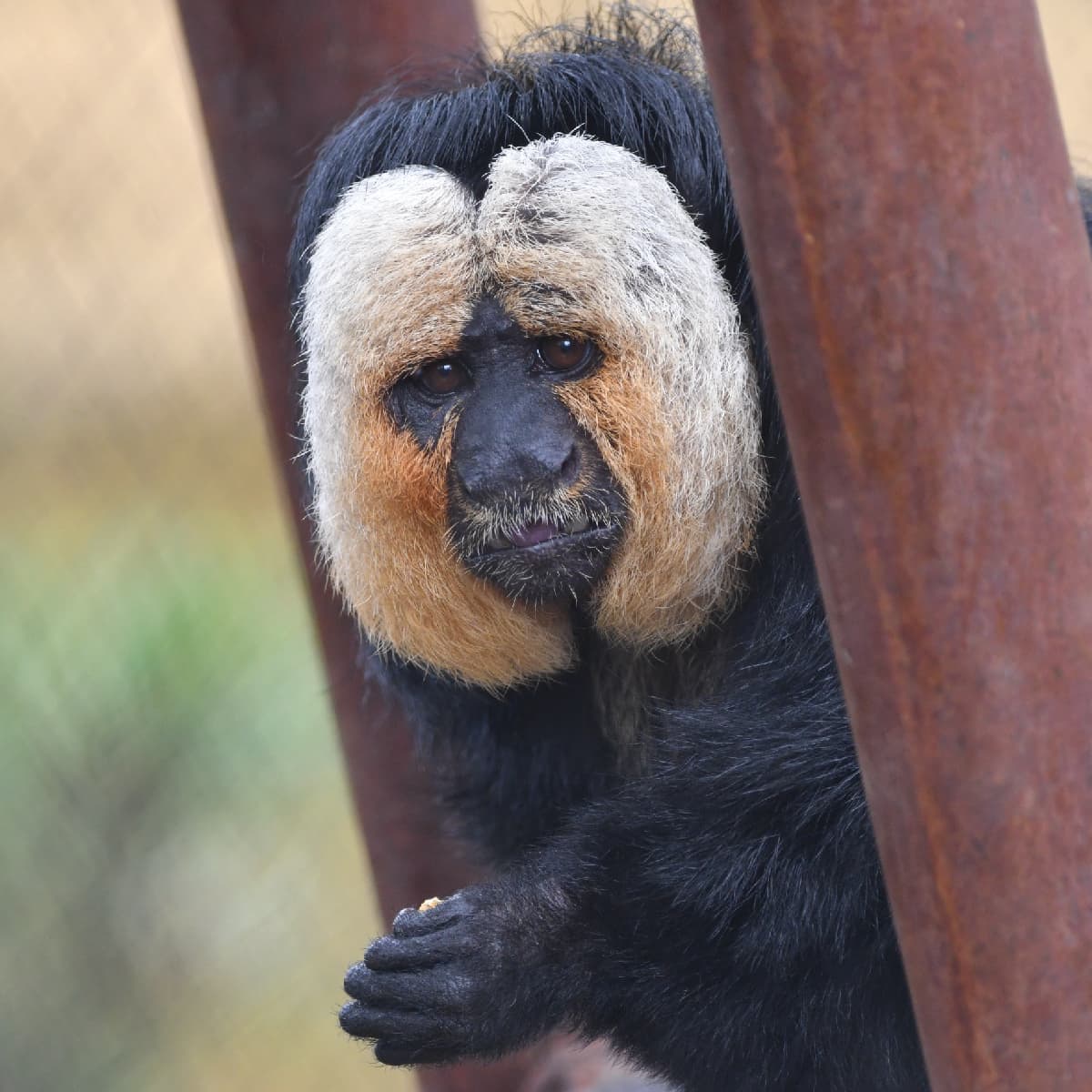
White-faced Saki
Pithecia pithecia
Did you know?
- White-faced sakis are a part of the Pitheciidae family, which they share with titis, uakaris, and other saki monkeys.
- They are also known as flying monkeys and pale-headed saki monkeys.
- They live in forests in northern South America.
- Thanks to their sturdy canine teeth, white-faced saki monkeys can easily crack open the hard shells of nuts and seeds – even brazil nuts.
- A female gives birth to one baby at a time.
Adaptations
White-faced saki are dramatic when they feel threatened. They fluff up and vigorously shake their body hair, then stomp their feet in an arched-back posture. They also are a vocal species, and duets between a male and a female help mark territory and strengthen their social bond. Due to their sturdy canine teeth, saki monkeys can easily crack open the hard shells of nuts and seeds—even Brazil nuts!
Young and Family
White-faced sakis live in small family groups. After an average 146-day pregnancy, females give birth to one brown infant. At two months, young males begin changing color from brown to black with white faces. Females remain brown into adulthood.
Threat Level
- Unknown
- Common
- Near Threatened
- Threatened
- Endangered
- Critically Endangered
- Extinct in the Wild
Common
The White-faced Saki is widespread and abundant.
Range
Northern South America
Habitat
Forests

We care about white-faced sakis
The Saint Louis Zoo participates in the Association of Zoos and Aquariums' Species Survival Program for white-faced sakis. We support a group in the Primate House and Primate Canopy Trails at the Zoo. Learn more about our conservation efforts.
Find this animal in Historic Hill

SAINT LOUIS ZOO ZONE
Historic Hill
Historic Hill is a lovely stroll through one of the oldest parts of the Saint Louis Zoo. From the 1904 World’s Fair Flight Cage to the Spanish architectural flavor of the 1920s in the Bird House, Primate House and Herpetarium to the finishing touches of our thoroughly modern exhibits, this area of the Zoo has a unique ambiance and a nostalgic history that make it a great destination.

